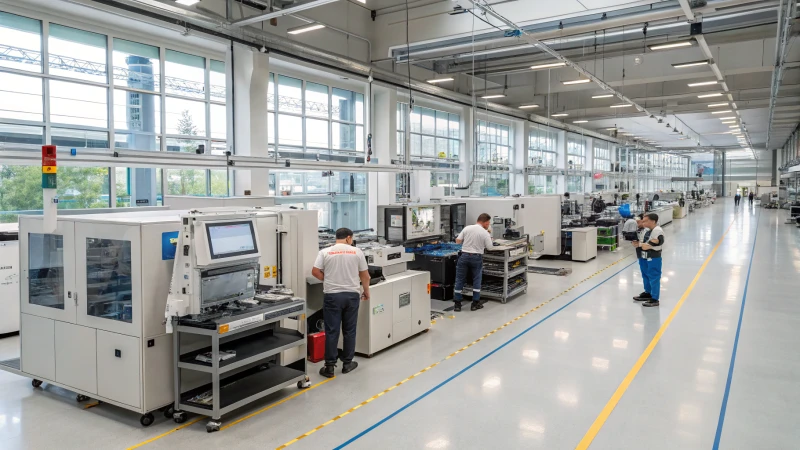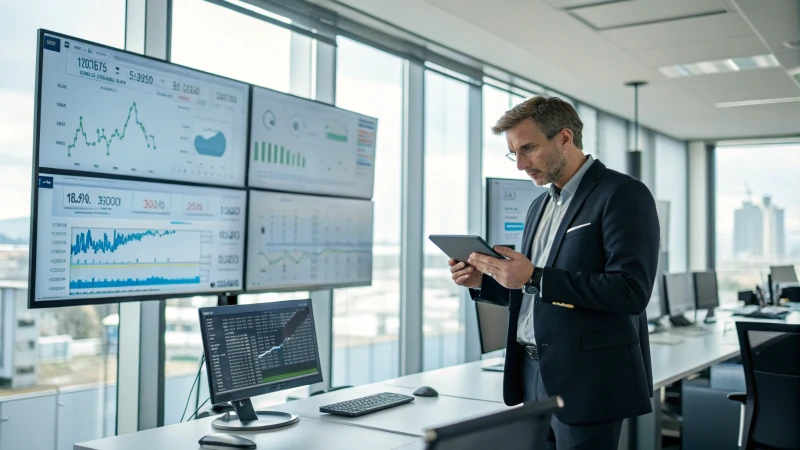
Exploring the cost of disposable wooden cutlery is like piecing together a puzzle. Each factor tells a story.
The cost of disposable wooden cutlery hinges on various elements like raw material sourcing, manufacturing efficiency, transportation logistics, and meeting environmental certifications.
When I first delved into the world of eco-friendly products, I was amazed by how many details influenced the final price of something as simple as wooden cutlery. From the type of wood sourced to the logistics of getting it shipped, each step adds a layer of complexity. For instance, ensuring the wood is sustainably harvested not only affects the cost but also aligns with my commitment to protecting our planet. Understanding these aspects has been crucial for making informed decisions in my business. Let’s take a closer look at each factor and see how they compare to traditional options like plastic.
Raw material sourcing affects cutlery cost.True
The availability and cost of wood directly impact the final price.
Environmental certifications decrease cutlery costs.False
Certifications often increase costs due to compliance requirements.
How Do Raw Materials Affect the Price of Wooden Cutlery?
Ever wondered how the wood in your cutlery drawer affects your wallet? Dive into the nitty-gritty of how raw materials shape wooden cutlery prices.
The price of wooden cutlery is greatly influenced by the raw materials used, which depend on availability, quality, and environmental certifications. These factors drive production costs and, consequently, retail prices.

I remember the first time I realized just how much the type of wood impacts the cost of something as simple as a fork. It was during a family camping trip when I forgot our usual plastic cutlery and picked up some wooden ones from a local store. As I handed over more cash than expected, I started wondering why these little pieces of wood were so pricey.
The Role of Wood Types in Pricing
Different types of wood, such as birch, bamboo, and maple, are commonly used in making wooden cutlery. Each type comes with unique characteristics and pricing implications. For instance, bamboo is often touted as a sustainable option1 due to its rapid growth rate and abundance, potentially reducing costs. In contrast, maple wood, known for its durability and aesthetic appeal, might drive prices higher.
| Wood Type | Characteristics | Cost Implications |
|---|---|---|
| Birch | Lightweight | Moderate |
| Bamboo | Fast-growing | Lower |
| Maple | Durable | Higher |
The Impact of Sourcing Locations
The geographical source of raw materials can drastically affect pricing. Sourcing locally reduces transportation costs and carbon footprint, while importing exotic woods may increase costs due to logistics and tariffs2. Additionally, regions with strict environmental regulations might incur higher expenses due to compliance requirements.
Environmental Certifications and Their Costs
Adhering to environmental certifications such as FSC (Forest Stewardship Council) or PEFC (Programme for the Endorsement of Forest Certification) can enhance brand reputation but also add to the overall cost. These certifications assure consumers of responsible sourcing practices but require investments in documentation and audits.
Supply Chain Dynamics
Supply chain stability plays a crucial role in pricing. Fluctuations in supply due to seasonal availability or unexpected disruptions can lead to price volatility. Establishing a reliable supply chain3 with multiple sources can mitigate risks and stabilize costs.
Understanding these elements allows businesses like mine to make informed decisions on sourcing strategies that align with both economic goals and sustainability initiatives.
Bamboo cutlery is more expensive than maple cutlery.False
Bamboo is cheaper due to its rapid growth and abundance.
Local sourcing reduces wooden cutlery costs.True
Local sourcing cuts transportation expenses and carbon footprint.
How does manufacturing influence cost management?
Ever wondered how those production lines keep our costs in check while churning out quality products?
Manufacturing is at the heart of cost management, steering production costs, efficiency, and resource allocation. Implementing strategic cost management in manufacturing can significantly cut expenses and boost financial health.

I remember my first real insight into the power of manufacturing in cost management. It was during a visit to a bustling factory floor, where I saw firsthand how every element—every cog in the wheel—played a crucial role in shaping a product's final cost. It's like seeing a complex puzzle come together, where each piece is vital for the bigger picture.
Impact of Production Costs on Pricing
Manufacturing costs are the backbone of pricing strategies. Imagine this: raw materials sourced sustainably, efficient labor practices, and overheads trimmed for energy savings all contribute to competitive pricing. It's a delicate dance of balancing quality and cost to carve out market share.
| Cost Component | Description |
|---|---|
| Raw Materials | Sourcing sustainably to reduce costs |
| Labor | Efficient workforce management |
| Overhead | Streamlining facilities for energy savings |
Enhancing Efficiency Through Lean Manufacturing
When I first learned about lean manufacturing principles, it was like discovering a hidden treasure map to operational efficiency. Techniques like Just-In-Time (JIT) not only reduce inventory costs but also enhance cash flow. Embracing these methods can transform your business operations. Explore more on lean techniques4 to see how they can benefit your business.
Resource Allocation and Capacity Planning
Resource allocation can feel like orchestrating a symphony, ensuring every instrument plays its part at the right time. Effective capacity planning ensures optimal use of equipment and workforce, smoothing out potential bottlenecks before they disrupt the harmony.
- Equipment Utilization: Analyzing machinery efficiency
- Workforce Management: Aligning skills with production needs
Sustainable Practices and Cost Savings
Incorporating sustainable practices in manufacturing is like hitting two birds with one stone—saving the environment while trimming costs. Energy-efficient machinery and waste reduction are not just buzzwords; they are practical strategies for lowering operating expenses.
Learn about sustainable manufacturing practices5 that can enhance cost-effectiveness.
Technological Advancements in Manufacturing
Embracing technology is like adding a turbocharger to your operations. Automation and AI-driven analytics are game-changers, offering insights into production efficiency and maintenance needs, thereby minimizing downtime.
For more insights into technology's role in manufacturing6, explore the latest trends and innovations.
By dissecting these components, businesses can unlock doors to cost reduction and efficiency enhancements, paving the way for improved financial results. Understanding these elements' interconnectedness is essential for strategic cost management in manufacturing.
Lean manufacturing reduces inventory costs.True
Lean principles like Just-In-Time minimize excess inventory, saving costs.
Sustainable practices increase manufacturing expenses.False
Sustainable practices often reduce costs through energy savings and waste reduction.
Why is logistics such a big deal when it comes to pricing?
Have you ever wondered how the journey of a product from warehouse to your doorstep affects its price tag?
Logistics plays a crucial role in pricing by impacting transportation, warehousing, and supply chain efficiency, which collectively add to operational costs. Efficient logistics can lower these costs, enabling businesses to offer competitive pricing.

The Role of Transportation in Cost Structure
Picture this: I once had to choose between sending a shipment by air or sea. Air was faster but came with a hefty price tag, while sea was economical but slow. This decision can be pivotal for businesses. Air freight might be the go-to for high-value items like electronics that need to hit the market fast to stay competitive. It’s a classic case of weighing cost against time.
Consider a company shipping high-value electronics7 internationally. Air freight might justify its cost by reducing time-to-market, thereby enhancing competitiveness.
Warehousing and Storage Expenses
When I think about warehousing, it reminds me of the time I debated centralizing all inventory in one location versus spreading it out. Centralization seemed cheaper for storage but ramped up distribution costs. On the flip side, decentralized warehousing offered quicker deliveries but at higher storage fees.
Consider the use of automated warehouses8 that leverage technology for efficient space utilization and order fulfillment. This can reduce operational costs over time, much like a well-oiled machine that never tires.
Supply Chain Efficiency
Imagine orchestrating a complex dance where every step is perfectly timed—that’s what an efficient supply chain feels like. By integrating technology like supply chain management software9, I’ve seen how even minor tweaks can reduce delays and minimize inventory costs. It’s like having a backstage pass to see how smoother operations translate directly into more attractive pricing.
Table: Logistics Components and Their Impact on Pricing
| Component | Influence on Pricing |
|---|---|
| Transportation | Affects speed and cost |
| Warehousing | Impacts storage and distribution |
| Supply Chain Efficiency | Reduces waste and delays |
Real-World Examples
Think about fast fashion giants like Zara10 who have nailed logistics to churn out trendy clothing quickly without breaking the bank. Or consider the food industry, where efficient logistics is key to keeping deliveries fresh and reducing spoilage.
These examples highlight how smart logistics management can make or break pricing strategies.
Air freight is more cost-effective than sea shipping.False
Air freight is faster but generally more expensive than sea shipping.
Automated warehouses reduce operational costs over time.True
Automation improves efficiency and space utilization, lowering costs.
How Do Environmental Certifications Influence Costs?
Imagine turning your business's green initiatives into a strategic advantage, while also managing the budget effectively. That's the magic of environmental certifications.
Environmental certifications can initially increase costs due to compliance requirements and audits. However, they often lead to long-term savings through increased efficiency, reduced waste, and improved brand reputation, offsetting the initial investment.

Understanding the Initial Cost Impact
When I first considered getting an environmental certification for my business, it felt like staring at a mountain of paperwork and upfront costs. The thought of revamping our processes, conducting audits, and potentially investing in new technologies was daunting. For instance, switching to renewable energy sources11 or implementing efficient waste management systems isn't just about flipping a switch—it's a significant commitment.
Long-term Financial Benefits
But here's the thing: once we got past the initial hurdles, the long-term benefits started to shine through. I remember the first time we saw a noticeable drop in our energy bills after implementing those changes—it was like seeing tangible proof that we were on the right track. Certifications like LEED12 not only improved our efficiency but also made our business more appealing to eco-conscious clients.
| Certification Type | Potential Cost Savings |
|---|---|
| LEED | Lower energy bills |
| FSC | Increased market access |
| ISO 14001 | Improved resource management |
Influence on Market Position
What's fascinating is how these certifications have elevated our market position. In an era where consumers are more eco-conscious than ever, having a certification is like having a badge of honor. It tells our customers that we're committed to sustainable practices, which in turn boosts sales and fosters brand loyalty. Plus, we've found it gives us a competitive edge when bidding for contracts that require such certifications.
Cost-Benefit Analysis of Certifications
Conducting a cost-benefit analysis is crucial. We had to weigh the initial expenses against potential savings and revenue growth. Thankfully, tools like sustainability reporting frameworks13 were invaluable in helping us assess these aspects comprehensively.
In the end, while the initial financial outlay for certifications can be significant, the potential for improved operational efficiency, enhanced brand reputation, and market opportunities often outweigh these early costs. It's like planting a seed that grows into something much larger than you initially expected.
Environmental certifications reduce long-term operating costs.True
Certifications lead to energy savings, reduced waste, and lower water usage.
Initial costs for environmental certifications are negligible.False
Businesses face upfront investments in processes, audits, and technology.
Conclusion
The cost of disposable wooden cutlery is influenced by raw materials, manufacturing efficiency, logistics, and environmental certifications, impacting pricing and sustainability in eco-friendly product sourcing.
-
Discover the sustainability benefits of bamboo, which can offer a cost-effective alternative for wooden cutlery. ↩
-
Explore how tariffs can impact the cost of importing wood, influencing cutlery pricing. ↩
-
Learn effective strategies to establish a reliable supply chain that mitigates risks and stabilizes costs. ↩
-
Lean manufacturing eliminates waste and enhances productivity, leading to significant cost reductions. ↩
-
Sustainable practices not only benefit the environment but also reduce operational costs. ↩
-
Technology enhances efficiency through automation and predictive maintenance, reducing downtime. ↩
-
Explore how air freight affects the cost structure when transporting high-value electronics internationally. ↩
-
Discover the benefits of automated warehouses in reducing logistics costs and improving efficiency. ↩
-
Learn how supply chain management software enhances coordination and reduces delays. ↩
-
Understand how Zara's logistics approach helps it maintain competitive pricing in fast fashion. ↩
-
Learn about how renewable energy can reduce operational costs and enhance sustainability. ↩
-
Discover how LEED certification can improve building efficiency and marketability. ↩
-
Explore tools that help evaluate the financial impacts of sustainability initiatives. ↩

